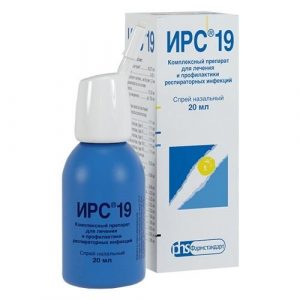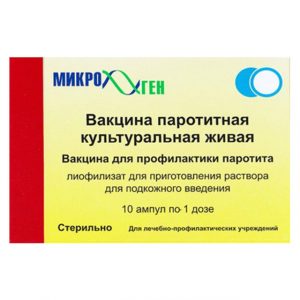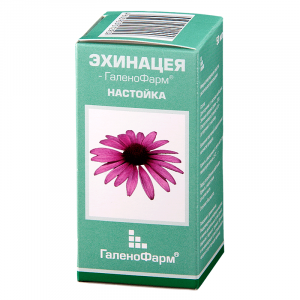Description
Release form
film-coated tablets
Packing
30 pcs.
Pharmacological action
Leflunomide Canon is a basic antirheumatic drug with antiproliferative, immunosuppressive and anti-inflammatory properties. The active metabolite of leflunomide A771726 inhibits dehydroorotate dehydrogenase and exhibits antiproliferative activity. A771726 in vitro inhibits mitogen-induced proliferation and DNA synthesis of T-lymphocytes.
The antiproliferative activity of A771726 appears, apparently, at the stage of pyrimidine synthesis, since the addition of uridine to the cell culture eliminates the inhibitory effect of metabolite A771726. Using radioisotope ligands, A771726 was shown to selectively bind to dehydroorotat dehydrogenase, which explains its ability to inhibit this enzyme and lymphocyte proliferation in stage G1. Lymphocyte proliferation is one of the key stages in the development of rheumatoid arthritis.
At the same time, A771726 inhibits the expression of receptors for interleukin2 (CD25) and Ki-67 and PCNA core antigens associated with the cell cycle.
The therapeutic effect usually manifests itself after 4-6 weeks and may increase in the future for 4-6 months.
Indications
-As a basic treatment for adult patients with active rheumatoid arthritis in order to reduce the symptoms of the disease and delay the development of structural damage to joints
-Active form of psoriatic arthritis.
Contraindications
Hypersensitivity, liver failure, severe immunodeficiency (including AIDS), impaired bone marrow hematopoiesis (anemia, leukopenia or thrombocytopenia not associated with rheumatoid arthritis), severe infections, moderate or severe renal failure, severe hypoproteinemia (including with nephrotic syndrome), pregnancy, women of reproductive age (not using contraceptives for the period of treatment with leflunomide and while the plasma concentration of the active metabolite is above 0.02 mg / l), lactation , age to 18 years.
Use during pregnancy and lactation
Contraindicated in women of childbearing age who do not use adequate contraceptives.
Special instructions
Information for patients. It is necessary to discuss with patients – women of childbearing age – the likelihood of an increased risk of birth defects in the fetus. When visiting a doctor, women need to explain that they will be at increased risk of having a baby with birth defects if you start taking leflunomide during pregnancy, become pregnant during the course of treatment, or until the treatment is interrupted and the drug is withdrawn. Men who wish to become fathers should interrupt leflunomide treatment.
Patients should be warned of the possibility of rare but serious skin reactions, the need for immediate contact with a doctor in case of skin rash or damage to the mucous membranes.
Patients should be advised of the possible hepatotoxic effects of leflunomide and the need to monitor liver enzyme activity.
Patients who receive immunosuppressive therapy with leflunomide or have completed this therapy before treatment with leflunomide, or have a history of significant hematological pathology, should be notified of the possible development of pancytopenia and the need for frequent hematological monitoring. They should be instructed to notify the doctor immediately if symptoms of pancytopenia are detected (mild subcutaneous hematomas, susceptibility to infections, pallor, and increased fatigue).
Composition
1 film-coated tablet contains:
active substance: leflunomide 20 mg.
excipients:
hyprolose (hydroxypropyl cellulose),
calcium hydrogen phosphate dihydrate,
corn starch,
croscarmellose sodium (primellose),
magnesium stearate,
cellulose microcrystals.
Shell composition:
Selecoat AQ-02003, including:
hypromellose (hydroxypropyl methylcellulose),
macrogol 6000 (polyethylene glycol 6000),
titanium dioxide.
Dosage and administration
Inside, the initial dose is 100 mg once for 3 days, then they switch to maintenance treatment – 10-20 mg once a day.
The tablets must be swallowed whole with a sufficient amount of liquid.
Side effects of
From the CCC side: 1-10% – moderate increase in blood pressure 0.01-0.1% – marked increase in blood pressure less than 0.01% – vasculitis ( a causal relationship with the drug has not been established).
From the digestive system: 1-10% – diarrhea, nausea, vomiting, decreased appetite, erosive and ulcerative lesions of the oral mucosa (aphthous stomatitis, ulceration of the lips), abdominal pain, increased activity of hepatic transaminases (especially ALT) less often than GGT and alkaline phosphatase, hyperbilirubinemia 0.01-0.1% – hepatitis, cholestatic jaundice less than 0.01% – pancreatitis, liver failure, acute liver necrosis.
From the musculoskeletal system: 1-10% – tendovaginitis 0.1-1% – tendon rupture.
From the skin: 1-10% – increased hair loss, eczema, dry skin.
Allergic reactions: 1-10% – rash (including maculopapular), itching of the skin 0.1-1% – urticaria, erythema multiforme exudative (including Stevens-Johnson syndrome), toxic epidermal necrolysis (Lyell’s syndrome) anaphylactic / anaphylactoid reactions.
Hematopoietic organs: 1-10% – leukopenia (white blood cells more than 2 thousand / μl), 0.1-1% – anemia, slight thrombocytopenia (platelets less than 100 thousand / μl) 0.01-0.1% – eosinophilia, leukopenia (white blood cells less than 2 thousand / μl), pancytopenia less than 0.01% – agranulocytosis.
Laboratory findings: minor hyperlipidemia, hypuricemia, increased activity of LDH and CPK, 0.1-1% – slight hypophosphatemia.
Other: a reversible decrease in sperm count, total sperm count and their motility less than 0.01% – the development of severe infections and sepsis (including fatal).
Drug Interactions
There is currently no information on the combined use of leflunomide with antimalarial drugs used in rheumatology (e.g. chloroquine and hydroxychloroquine), Au drugs (IM or oral), D-penicillamine, azathioprine and other immunosuppressive drugs excluding methotrexate). There is no known risk associated with complex therapy, especially with prolonged treatment. Since this kind of therapy can lead to the development of additional or even synergistic toxicity (e.g., hepatotoxicity or hematotoxicity), combinations of this drug with other basic drugs (e.g. methotrexate) are undesirable.
Recent concomitant or subsequent use of potentially myelotoxic agents may be associated with a greater risk of hematologic effects.
Immunosuppressants increase the risk of developing infections, as well as malignant, especially lymphoproliferative, diseases.
Caution should be exercised when prescribing drugs metabolized under the influence of CYP2C9 (phenytoin, warfarin, tolbutamide), with the exception of NSAIDs.
An increase in adverse events may occur in the case of recent or concomitant use of hepatotoxic or hematotoxic drugs or when these drugs are started after treatment with leflunomide without a washout period.
In patients with rheumatoid arthritis, no pharmacokinetic interaction between leflunomide (10-20 mg / day) and methotrexate (10-25 mg / week) was found.
Colestyramine or activated carbon quickly and significantly reduces the concentration of A771726 in plasma.
Perhaps combined use with NSAIDs and corticosteroids.
The enzymes involved in the metabolism of leflunomide and its metabolites are not exactly known. There is no clinically significant interaction with cimetidine (a non-specific inhibitor of cytochrome P450). After the concomitant administration of a single dose of leflunomide against the background of multiple doses of rifampicin (a non-specific inducer of cytochrome P450), Cmax A771726 increased by about 40%, while the AUC did not change significantly. The mechanism of this effect is not clear.
There is no decrease in the contraceptive effect when combined with three-phase oral contraceptive drugs containing 30 μg of ethinyl estradiol, while the pharmacokinetics of A771726 did not change.
There is no data on the efficacy and safety of vaccination during treatment with leflunomide (vaccination with live vaccines is not recommended). When planning vaccination with a live vaccine, the long-term T1 / 2 of the drug after discontinuation should be considered.
Overdose
Treatment: cholestyramine or activated charcoal. Colestyramine, taken orally 8 g 3 times a day for 24 hours, decreases plasma A771726 content by about 40% after 24 h and by 49-65% after 48 h.
Introduction of activated charcoal (as a suspension) orally or via the stomach probe (50 g every 6 h for 24 hours) reduces the concentration of the active metabolite A771726 in plasma by 37% after 24 h and by 48% after 48 h
Storage Conditions
In a dry, dark place at a temperature not exceeding 25 C. Keep out of the reach and sight of children.
Shelf life
2 years.
Deystvuyushtee substance
Leflunomide
Dosage form
tablets
Possible product names
LEFLUNOMID CANON 0,02 N30 TABLE S / N
Leflunomide Canon tab po 20mg x 30
LEFLONOMID CANON TAB. P / O CAPTURE. 20MG No. 30
Leflunomide Canon tab. p.p. 20 mg N30 Russia
Leflunomide Canon tablets 20 mg, 30 pcs.
Kanonfarma, Russia




